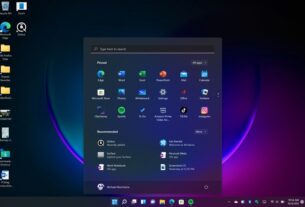A payroll system is a process by which businesses pay their employees for the work they have completed. This process includes calculating hours worked, withholding taxes and other deductions, and issuing payments.
When it comes to payroll accounting, there is a lot that goes on behind the scenes. In order to ensure that employees are paid accurately and on time, businesses must keep track of a variety of different data points. This can include everything from hours worked to vacation days taken.
Any mistake could result in overpaying or underpaying employees, which could lead to legal problems down the road. In order to make sure that all of this information is tracked correctly, businesses typically use payroll accounting software.
What is Payroll Accounting Software
Payroll accounting software is a tool used by businesses to manage employee payroll and related taxes. The software typically includes features for tracking employee hours, calculating wages, withholding taxes, and generating reports. Some payroll accounting software packages also include human resources (HR) and time and attendance tracking capabilities.
Payroll accounting software can be deployed as a cloud-based or on-premises solution. Cloud-based solutions are typically offered as software-as-a-service (SaaS), while on-premises solutions are installed and managed locally.
Businesses of all sizes use payroll accounting software to streamline and automate employee payroll processing. The software can help businesses save time and money, while reducing the risk of errors and compliance issues.
There are many different ways that businesses can keep track of employee wages using a payroll accounting software. Here are seven of the most popular methods:
Monitor employee hours worked.
Most payroll accounting software systems have the ability to track employee hours worked. This can be done through manual entry or by integrating with time and attendance tracking systems. This data can then be used to calculate wages owed.
Calculate rates of pay.
The software will need to know what hourly rate or salary each employee is paid in order to calculate their wages. This information can be entered manually or imported from other systems.
Track overtime hours.
If employees are entitled to overtime pay, the software will need to track the extra hours worked. This can be done by entering the data manually or integrating with time and attendance tracking systems.
Calculate deductions.
Payroll accounting software can be used to calculate deductions from an employee’s wages. This could include tax, social security, and health insurance deductions. The deduction amount can be entered manually or calculated automatically based on the employee’s salary. This information can be used to prepare tax filings and ensure that the business is in compliance with applicable laws.
Generate pay stubs.
Once all the data has been entered, the software can generate pay stubs for each employee. This will show their gross wages, deductions, and net pay. The pay stubs can be printed or emailed to employees.
Process payroll.
Once all the data has been entered and pay stubs generated, the software can process the payroll. This will involve calculating the total amount of wages owed and deducting any taxes and other deductions. The net pay can then be sent to employees via direct deposit or check.
Generate reports.
Payroll accounting software can generate a variety of reports. This could include employee hours worked, overtime hours, deductions, and payroll costs. These reports can be used to track employee wages and payroll expenses.
Takeaway
Payroll accounting software can be a valuable tool for businesses of all sizes. It can help save time and money, while also ensuring compliance with labor laws. If you are considering using this type of software, be sure to research different options to find the one that best meets your needs.




